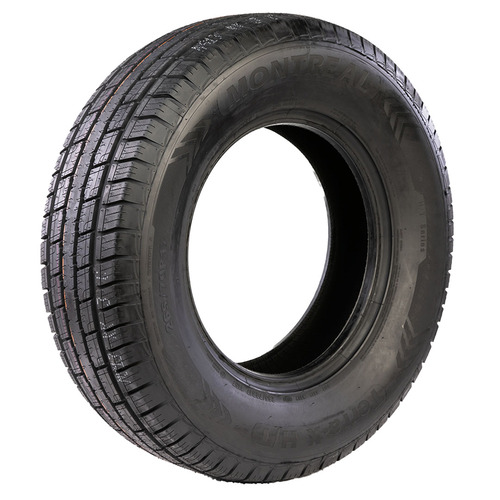Last Updated on August 2, 2025
Winter Tire Compound Technology: Cold Weather Performance Explained
Winter driving can be tough, especially when roads get icy or snowy. However, one of the best ways to keep yourself safe in these conditions is by using winter tires. If you’ve ever wondered what makes winter tires so different from regular tires, the answer lies in the special rubber compound they’re made from. This compound is designed to stay flexible and “sticky,” even in freezing temperatures, essential for maintaining traction on cold roads.
This article will explore the science behind winter tire compounds, why they matter, and how they contribute to safer winter driving.
What Are Winter Tire Compounds, and Why Are They Important?
At the heart of every winter tire is its compound—the specific mix of materials that make up the rubber. Winter tire compounds are specially formulated to remain soft and flexible when temperatures drop. This flexibility is crucial because it allows the tire to grip the road more effectively when it’s cold. In contrast, the rubber in regular tires stiffens in colder weather, reducing traction and making driving less safe. Winter tires, however, are designed to maintain a level of softness that helps them grip better on snow, ice, and wet surfaces.
Winter tire compounds typically contain more natural rubber, which keeps the tire flexible, and silica, a mineral that improves traction on slick surfaces. These ingredients and other additives work together to prevent the rubber from hardening in cold temperatures and enhance the tire’s ability to grip the road.
Why Regular Tires Don’t Perform Well in Winter
Regular tires, like all-season or summer tires, are made with a harder rubber compound ideal for warmer weather. This harder compound helps the tire handle heat and wear during the summer, but when the temperature drops, it can become too stiff to perform well in winter conditions. Harder rubber doesn’t have the flexibility to maintain traction on cold, snowy, or icy roads. This lack of flexibility can lead to longer stopping distances, less control, and a higher risk of slipping or sliding.
Winter tires, on the other hand, are designed to tackle cold weather head-on. Their flexible rubber lets them grip the road and stop more effectively, even in freezing conditions. This is why switching to winter tires is essential if you live in an area with harsh winters—they simply perform better when it comes to traction and handling in cold weather.
The Role of Flexibility in Winter Tire Performance
One key feature of winter tires is their flexibility. Regular tires become stiffer as temperatures drop, making it harder to grip the road. Winter tires are designed to stay soft and pliable even when the mercury dips well below freezing. This flexibility allows the tire to better “hug” the road, creating more contact between the rubber and the surface, ultimately giving the tire a better grip.
When a tire grips the road better, it improves performance across all aspects of winter driving—accelerating, braking, or turning. Winter tires don’t just grip the road; they mold to the surface, which helps them maintain control in snow, ice, and even wet conditions. This is especially important when driving on surfaces like ice, where regular tires might slide around.
Winter Tire Compounds vs. Tread Design: A Perfect Pairing
While winter tires are often recognized for their deep treads and special patterns, the rubber compound is just as important as the tread design. The compound keeps the tire flexible enough for the tread to function as intended. Even with a great tread design, the tire won’t grip as well in cold weather if the compound isn’t right.
Combining a special rubber compound and an optimized tread pattern gives winter tires superior performance in snow and ice. The tread helps the tire push through snow and slush, while the flexible compound allows the tire to maintain contact with the road. Without the right compound, even the best tread design would struggle to maintain the grip you need for safe winter driving.
Innovations in Winter Tire Technology
Winter tire technology has advanced greatly in recent years. Manufacturers are always looking for ways to improve tire performance, including refining the compounds used in winter tires. One of the biggest advances in recent years is the introduction of micropore technology in some winter tire compounds. This technology creates tiny pores in the rubber, allowing the tire to grip ice even better by mimicking how suction cups work.
Another breakthrough has been the use of multi-compound layers. Some winter tires are now made with multiple layers of rubber compounds, each with a specific. For example, the outer layer might be tougher for durability, while the inner layers are softer for better grip on icy roads. These innovations have made winter tires more effective, especially in extreme winter conditions.
How Winter Tire Compounds Benefit You in Real Life
Winter tires aren’t just a good idea—they can make a huge difference in real-world safety. The flexibility of the rubber compound, combined with the tread design, allows winter tires to stop much faster on ice and snow than regular tires. Winter tires can reduce your stopping distance by up to 30% on icy roads. That could be the difference between avoiding an accident and skidding out of control.
Winter tires also provide better handling on slick roads. Since they remain soft and flexible, they give you more control when turning or maneuvering through snow and slush. You just don’t get this level of control with all-season tires. Additionally, winter tires help reduce the risk of hydroplaning on wet or slushy roads, as their design allows them to channel water and slush away from the tire’s surface more effectively.
Are All Winter Tire Compounds the Same?
While all winter tires are designed with the same basic goal—to improve performance in cold weather—not all winter tire compounds are created equal. Different manufacturers create different types of compounds to suit various needs. For example, performance winter tires have compounds that balance winter grip with high-speed handling. These are perfect for drivers who want to keep their cars stable on highways during winter.
For regions with particularly harsh winters, extreme winter tires use even softer compounds to provide maximum traction in deep snow and ice. And if you’re driving in places where ice is common, you might consider studded tires that use a tougher rubber compound designed to handle the metal studs, which provide extra grip on solid ice.
Choosing the Right Winter Tire Compound Technology for You
When choosing winter tires, consider the climate and conditions where you’ll be driving. A regular winter tire with a balanced compound should work fine if you live in a region with mild winters and occasional snow. But if you’re in a place that experiences a lot of ice or deep snow, you might want to look for a tire with a softer compound that offers extra grip.
Your driving habits also influence tire selection. If you drive mostly on highways and want to maintain stability at higher speeds, performance winter tires might be the best choice. For larger vehicles like SUVs and trucks, look for winter tires with compounds designed to handle the extra weight and provide stability on slick roads.
Taking Care of Your Winter Tires
Proper maintenance is key to getting the most out of your winter tires. Start by checking your tire pressure regularly, as it can drop in colder temperatures. Rotating your tires regularly helps ensure they wear evenly, extending their lifespan. When the winter season ends, store your tires in a cool, dry place—this prevents the rubber from degrading due to excessive heat.
Conclusion
Winter tire compounds are essential for safe winter driving. The special rubber mix allows winter tires to stay flexible in freezing temperatures, providing better grip and handling on snow and ice. Whether navigating icy streets, making a quick stop on slushy roads, or driving through deep snow, the right winter tire compound can make all the difference. By understanding how these compounds work, you can make a more informed decision about the tires you choose and keep yourself safer on winter roads.
-
Automotive Specialist
-
Proofreader
-
Writer









